Brasil! Brasil! The Birth of Modernism – Royal Academy, London (LAST CHANCE TO SEE)
A last minute excursion to the Royal Academy exhibition Brasil! Brasil! The Birth of Modernism introduces me to some new artists. But does it all hang together?

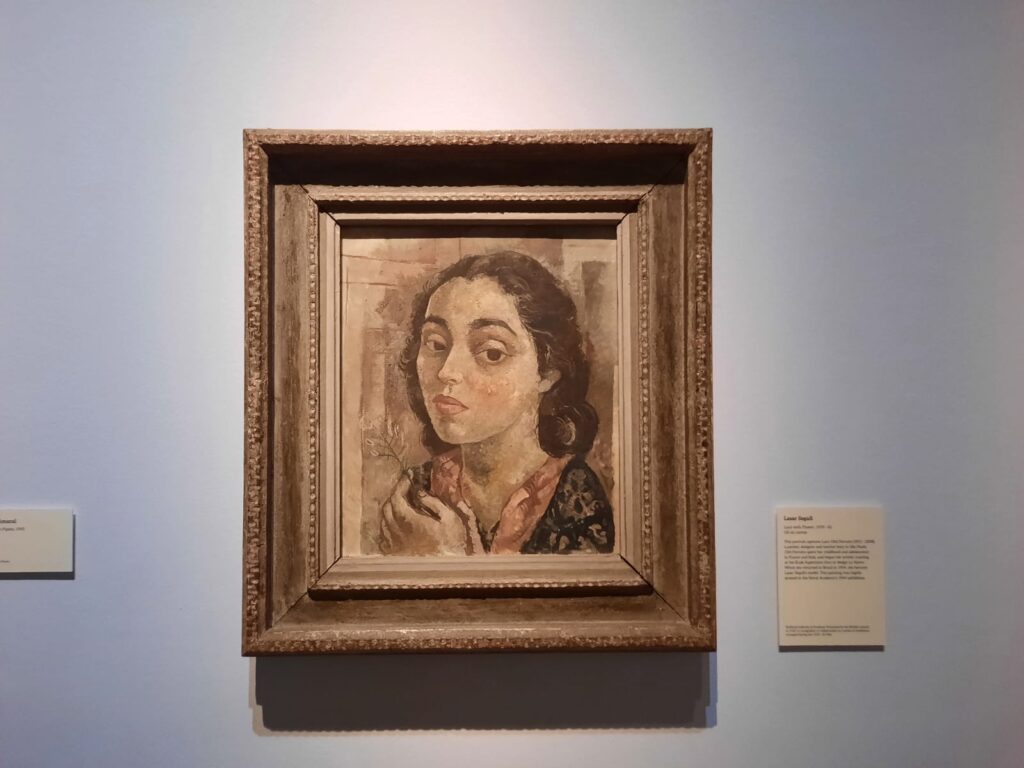
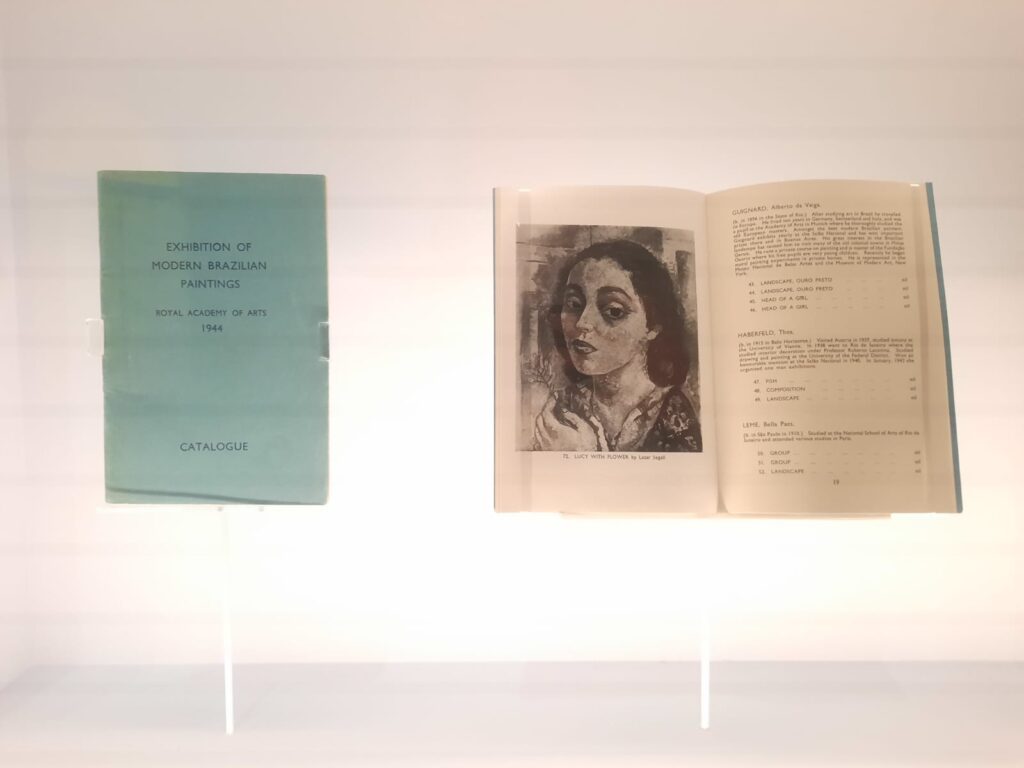
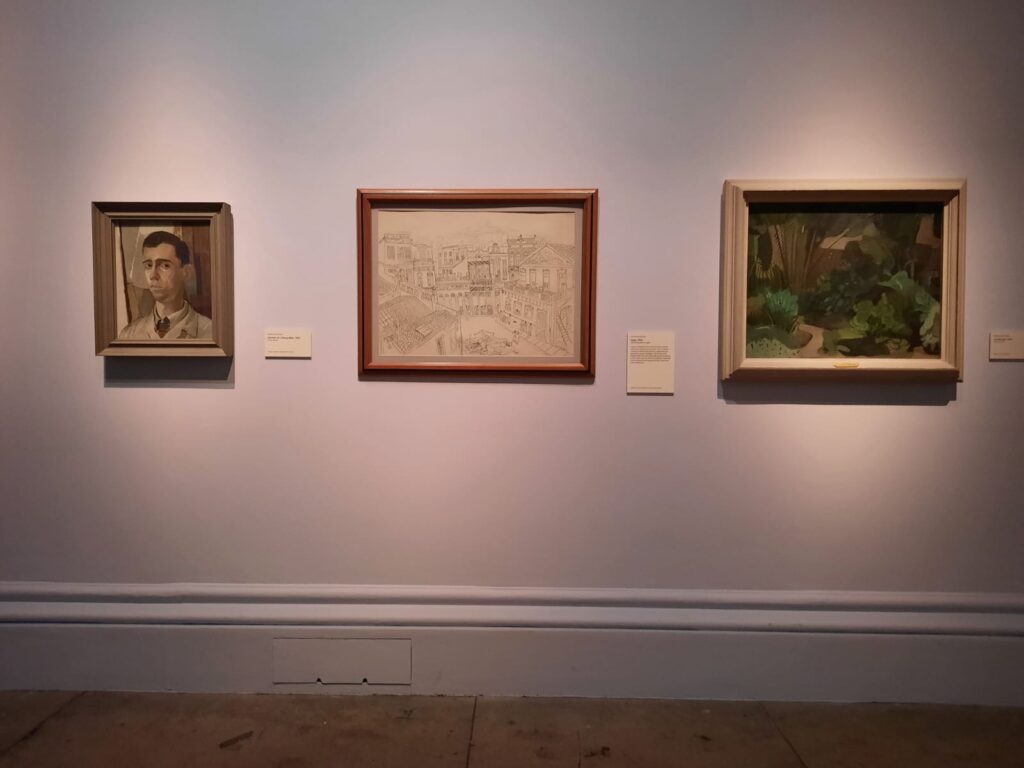

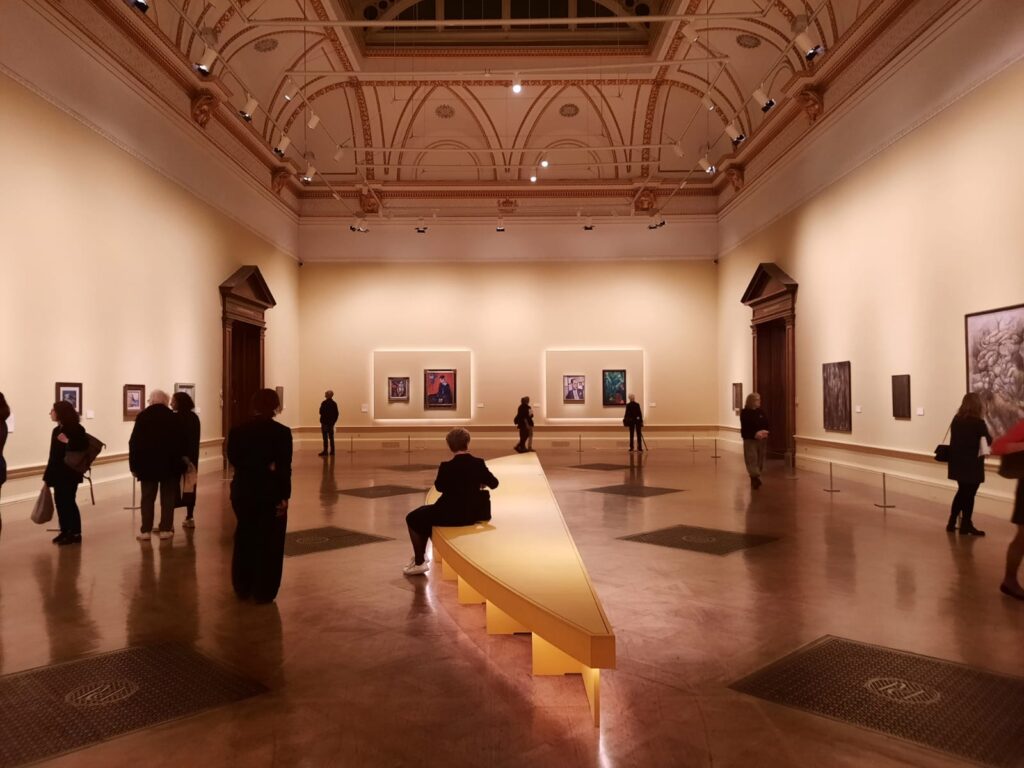
Brasil! Brasil! The Birth of Modernism
Art lovers who follow the Salterton Arts Review may have noticed there has not been a lot of art content in recent weeks. Or not in London, at least: the Dunedin Public Art Gallery has been the exception. It just goes to show that, as much as you love art, and art galleries, and art exhibitions, real life has a habit of getting in the way. So I am yet again in the position of making some last minute dashes to exhibitions before they close!
This week’s dash took me to the Royal Academy to see Brasil! Brasil! The Birth of Modernism. Organised together with the Zentrum Paul Klee in Bern, Brasil! Brasil! The Birth of Modernism brings together works by ten artists, spanning modern art in Brazil from the 1910s to 1970s. A pretty ambitious scope, even with all the space of the RA’s main galleries to make use of.
In the end I think it was this ‘angle’ on the exhibition which I found at the same time compelling and limiting. I enjoy getting to know artists I’m not familiar with, and the capsule collections here were a great way to do so. But I found it very difficult to build up a picture of a movement through successive artists. There were a few mentions of connections between the different individuals. But I left the exhibition lacking a sense of how modernism developed in Brazil. How did it go from artists travelling to Europe or the US and seeing new ways of painting, and form something uniquely Brazilian? What was the Brazilian art scene of exhibitions, collectors, art schools that nurtured this nascent modernism?
Perhaps my visit was too hasty, and there was context that I missed. Let’s take a look together so you can make your own mind up, and also get to know some of the artists featured in the exhibition.

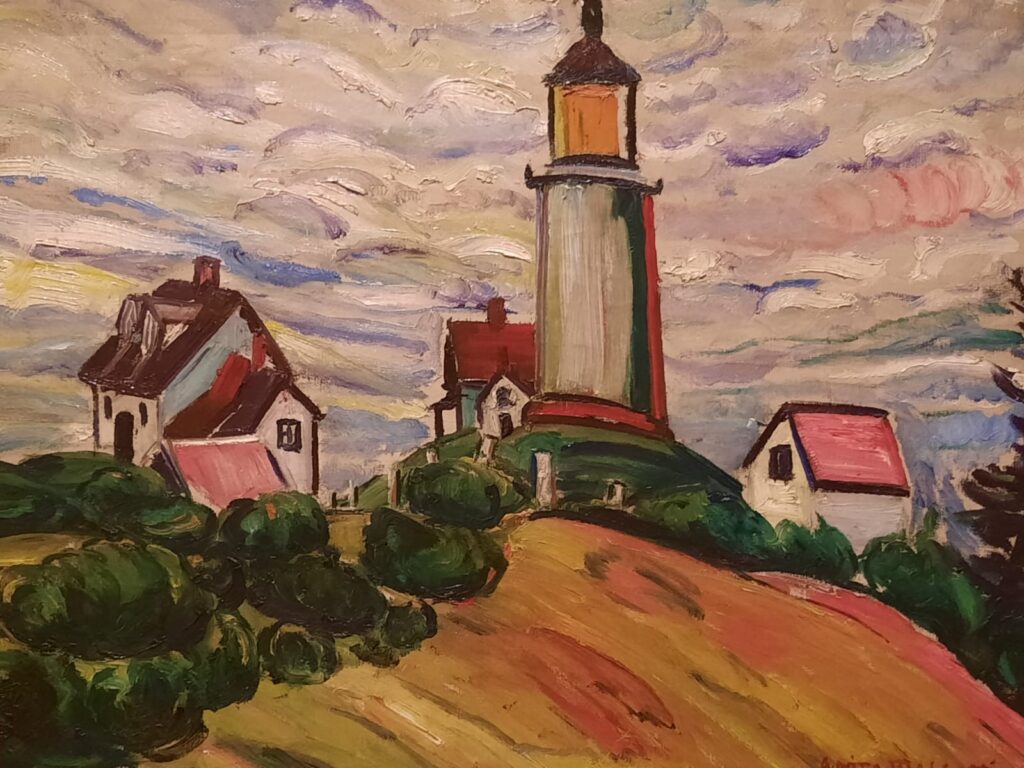

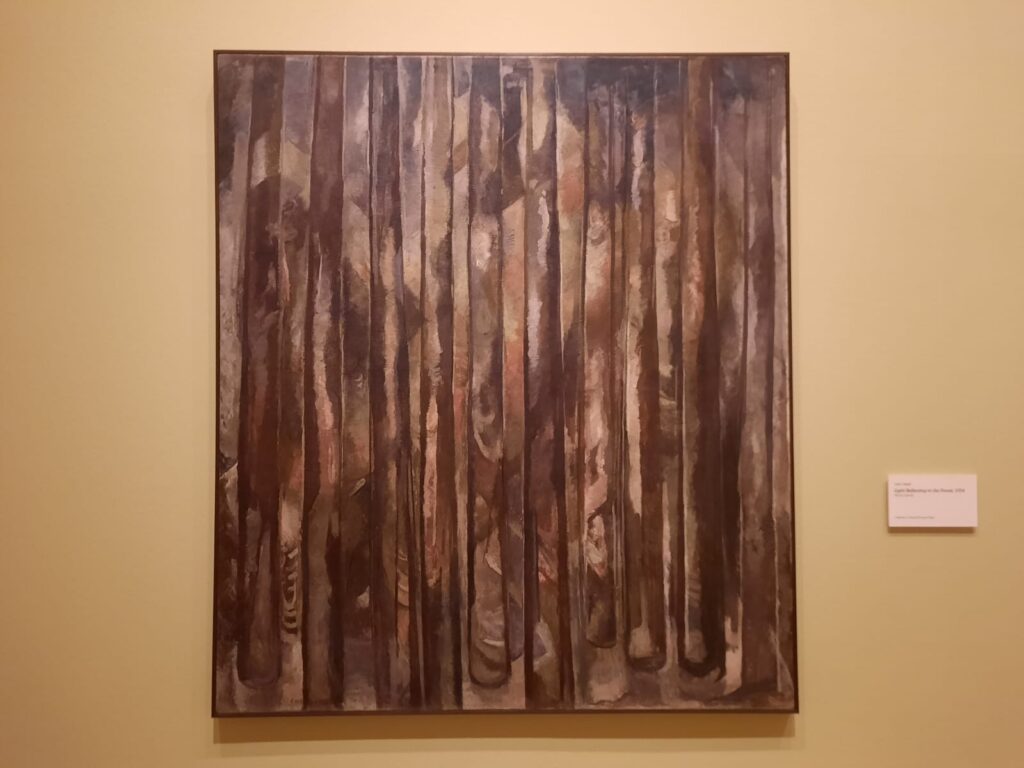

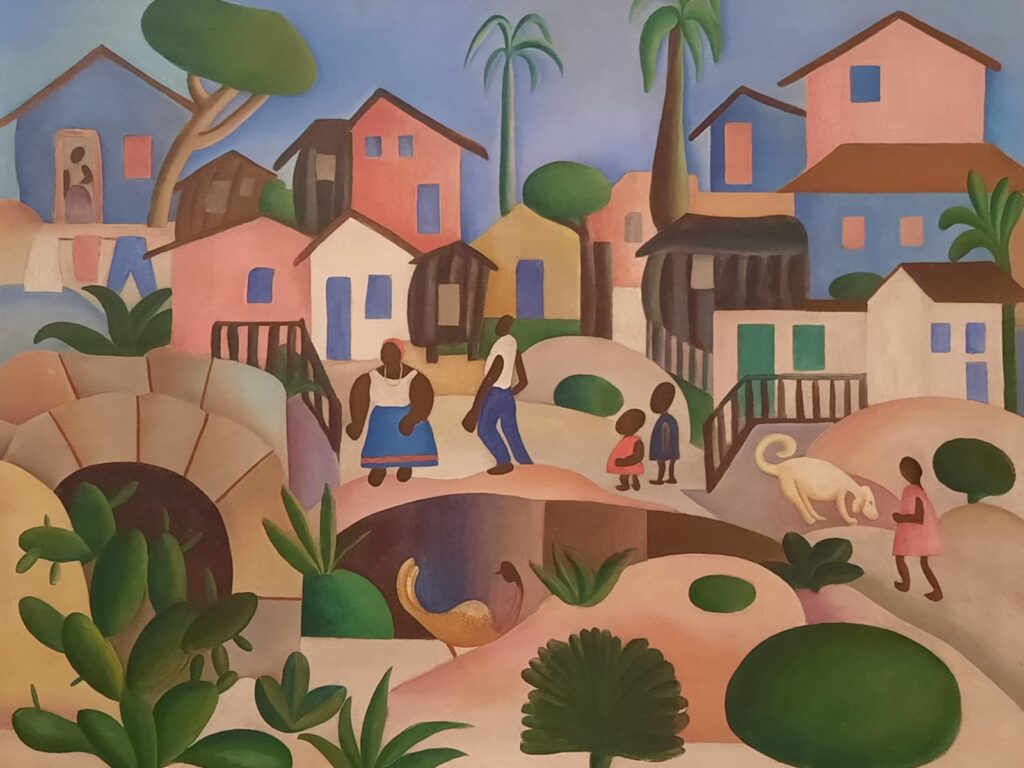
Long Modernism in Brazil
The 1910s to 1970s is quite a long time for modernism to be flourishing in art. Isn’t it? Let’s understand a bit more about that first, to set the scene, and understand if there’s anything about Brazil that makes this timeframe unique or important in its historic context.
I think we can all agree on the 1910s as the starting point. It means Brazil were early adopters of modernism. There are arguments for earlier forerunners of modernism, sure (including Turner and the Impressionists and Post-Impressionists). But the emergence of strikingly modern work in the first decade of the 20th century by the likes of Picasso, Braque, Kandinsky, Schoenberg and the like is a much more concrete emergence of modernism as a movement.
From the earliest days of Picasso and Braque’s Cubist experiments, Brazilian artists encountered European and US* modernism and incorporated elements of it into their work. Anita Malfatti, for instance, lived in Berlin from 1910 to 1914, and studied in the US in 1915. In 1917, back in Brazil, she held the ‘Exposição de pintura moderna Anita Malfatti’ (‘Anita Malfatti Exhibition of Modern Painting). Unfortunately for Brazilian Modernism, Malfatti took the harsh criticism so badly, she permanently pulled back from the experimentation of her early works.
So Brazil, it seems, was not ripe for modernism. It was a country in flux, however. Brazil had only been a Republic since 1889 (it was previously the independent Empire of Brazil). Nation building is often a time of identity building, and for Brazil this meant looking inward and incorporating Brazil’s different ethnic identities and traditions into art. Specifically modern art. There was a process of artists travelling and studying abroad, but coming back and applying this knowledge in different ways that made sense in Brazil. The Grupo dos Cinco or Group of Five were key to the early stages of the Modernist movement. As the century progressed, Brazil lived through the Vargas Era, dictatorship, and other upheavals. The prolonged trend of modernism in art remained a way to address social issues, reject cultural conservatism, and reflect Brazil’s multiple peoples, traditions and beliefs.
*I hesitate to say American here because Brazil is also an American country – please forgive the slightly awkward phrasing where I’ve done this.
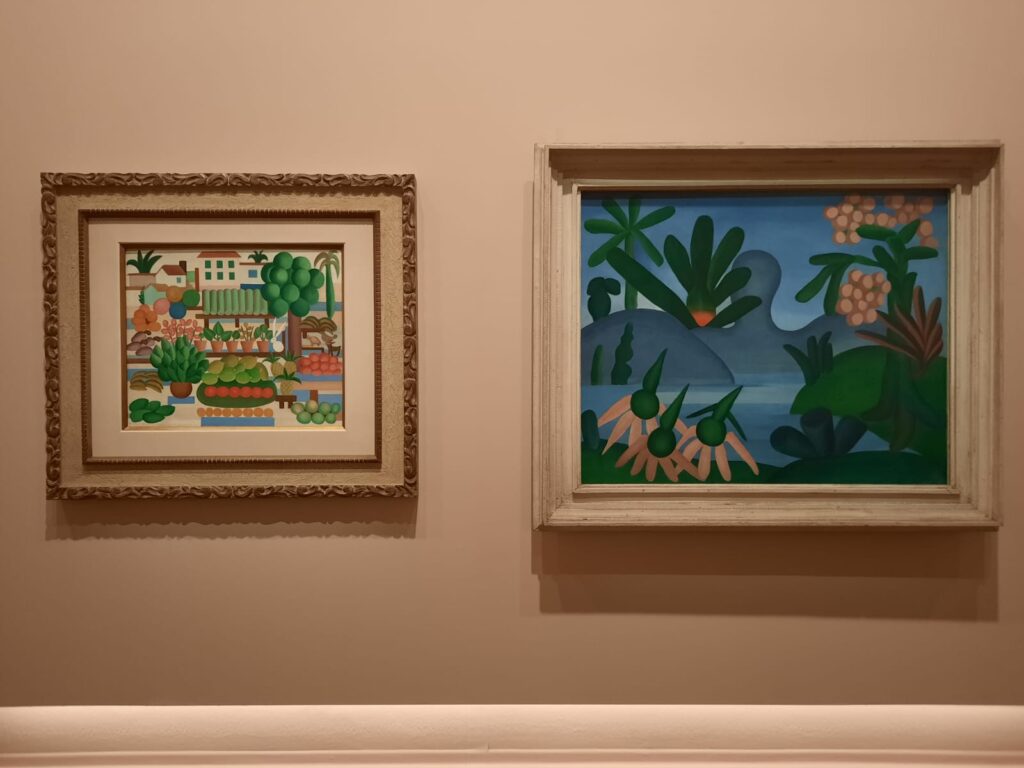
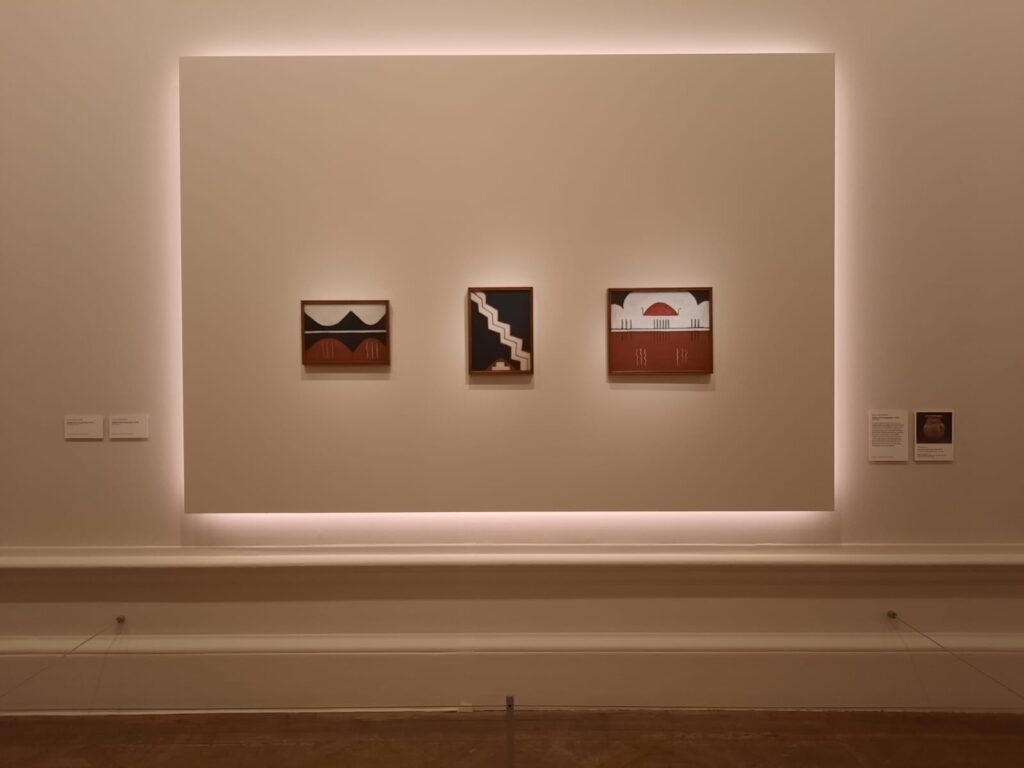
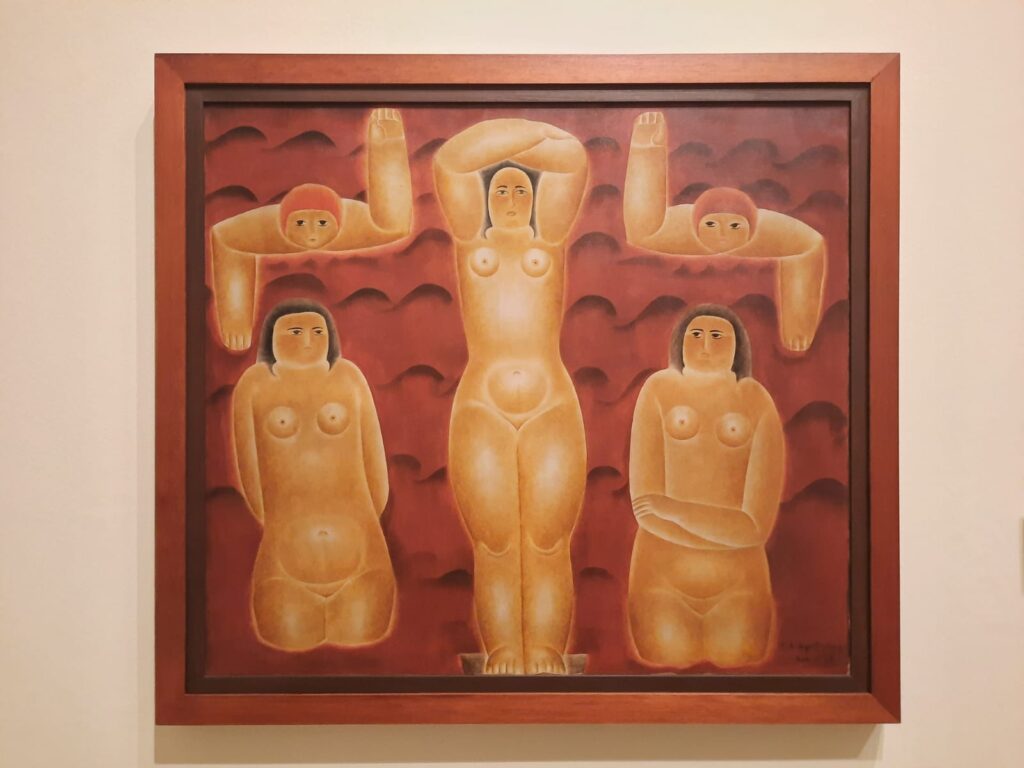
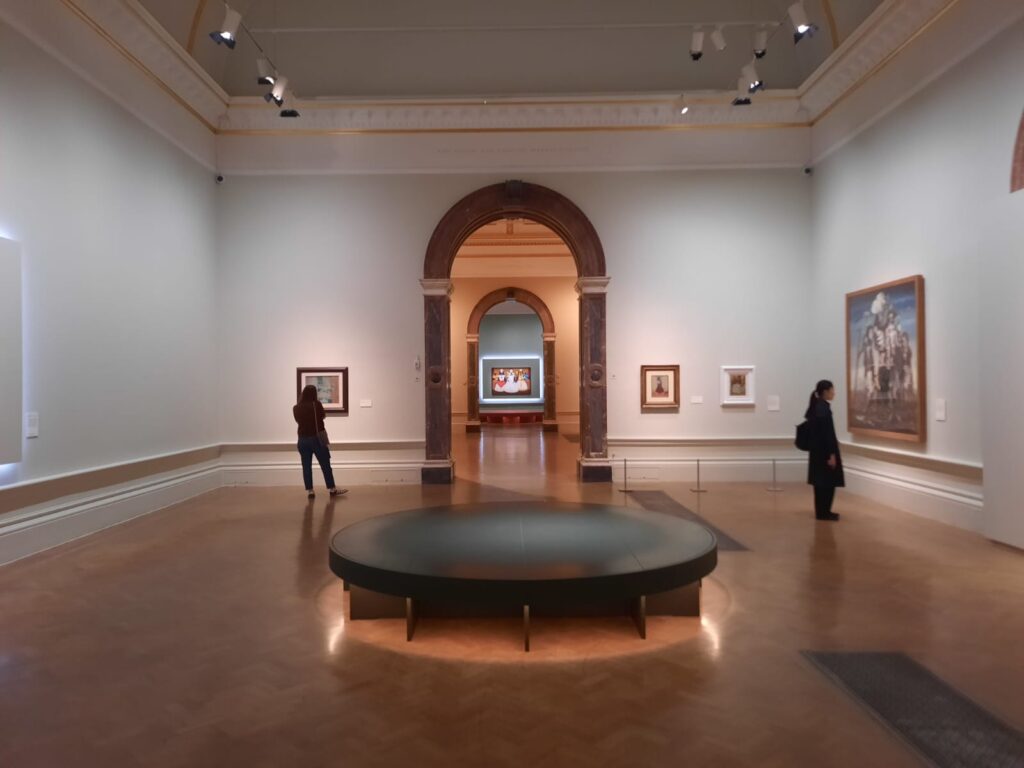
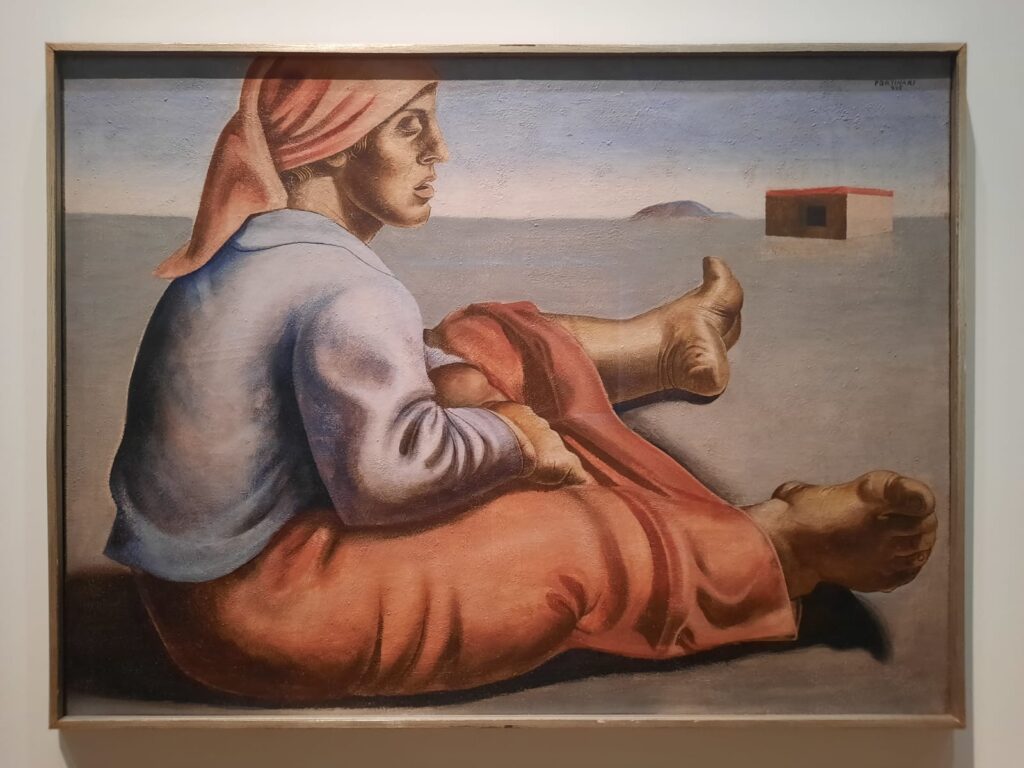
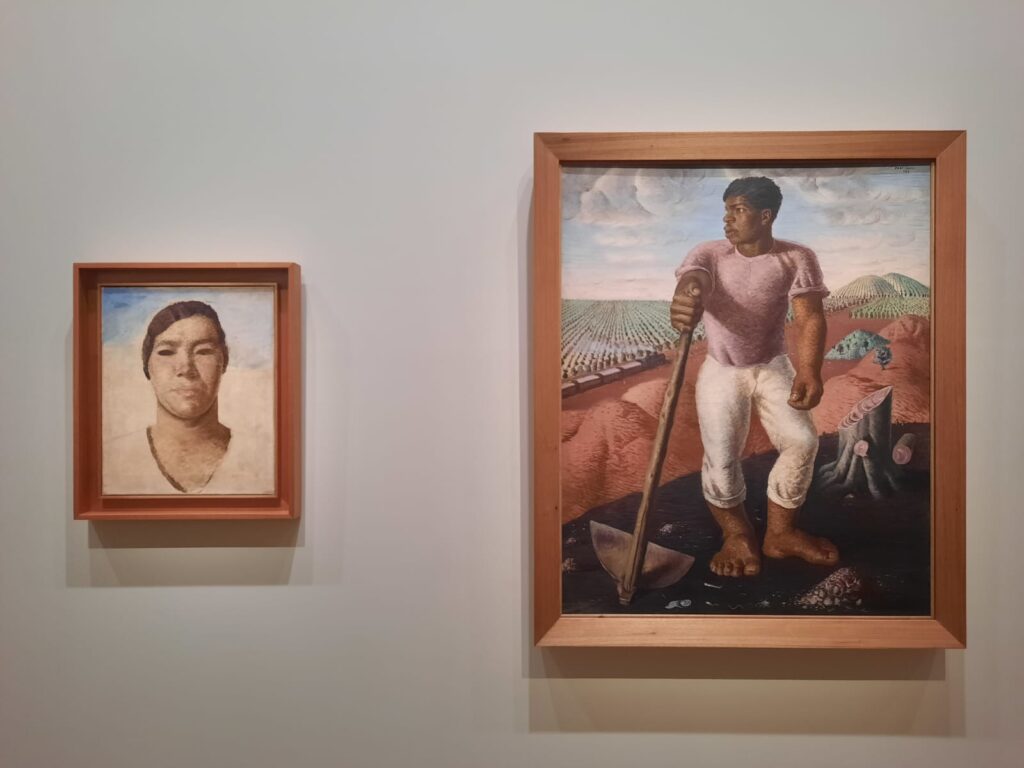
Modernism Through Individual Artists
A lot of what I wrote in the section above I gleaned through the exhibition texts or additional reading. Because, while the focus on individual artists is great for getting to know them, their style and their works, it’s much more difficult to understand a movement that way. The Grupo dos Cinco, for instance, crops up a few times. Anita Malfatti and Tarsila do Amaral, who are featured here, were members. But we don’t get a sense of them as a group. How were they influential? Did they have a manifesto? Did they exhibit together? I’m still not sure.
That is not to say, however, that I didn’t enjoy getting to know the ten artists included in Brasil! Brasil! The Birth of Modernism. The strength of this format is giving each artist space so the audience can see their style in either its breadth or its unity. It also ends up showcasing the diversity of Brazil and its Modernist movement in microcosm. By this I mean the contribution of male and female artists are included, as well as artists of Afro-Brazilian (Rubem Valentim) and Indigenous (Djanira, or Djania da Motta e Silva) heritage. There are self-taught artists (Alfredo Volpi) and artists who emigrated to Brazil (Lasar Segall) or whose parents did (Candido Portinari). I guess maybe what I’m saying, despite my previous assertions, is that examining individual artists in turn does give a sense of a varied, complex art movement.
Another point of commonality between the individual artists is the way Brazil itself is a constant source of inspiration. Multiple artists depict lush, green foliage. Colourful villages and settlements provide interesting compositions. And reflecting Brazil’s people in paint was a common concern, as well. The artist’s gaze was not always a sensitive one – at least one artwork is included here to draw attention to the way it utilises racist and anonymising tropes – but we do get a sense of the vibrancy and energy of Brazil from these canvases.



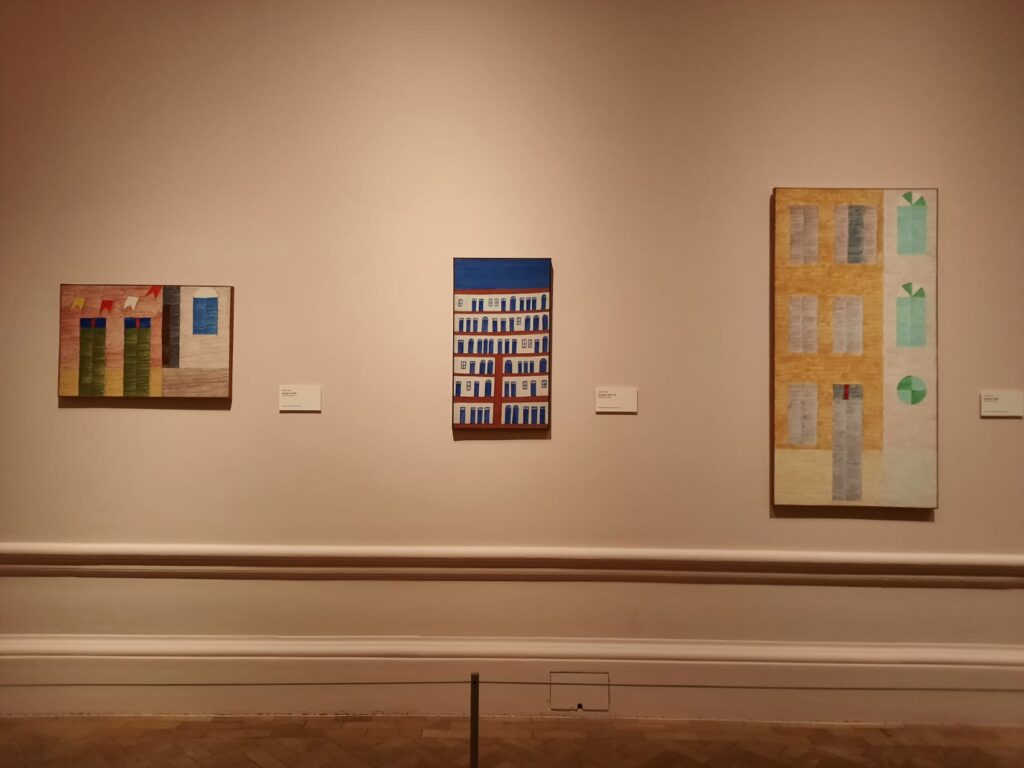
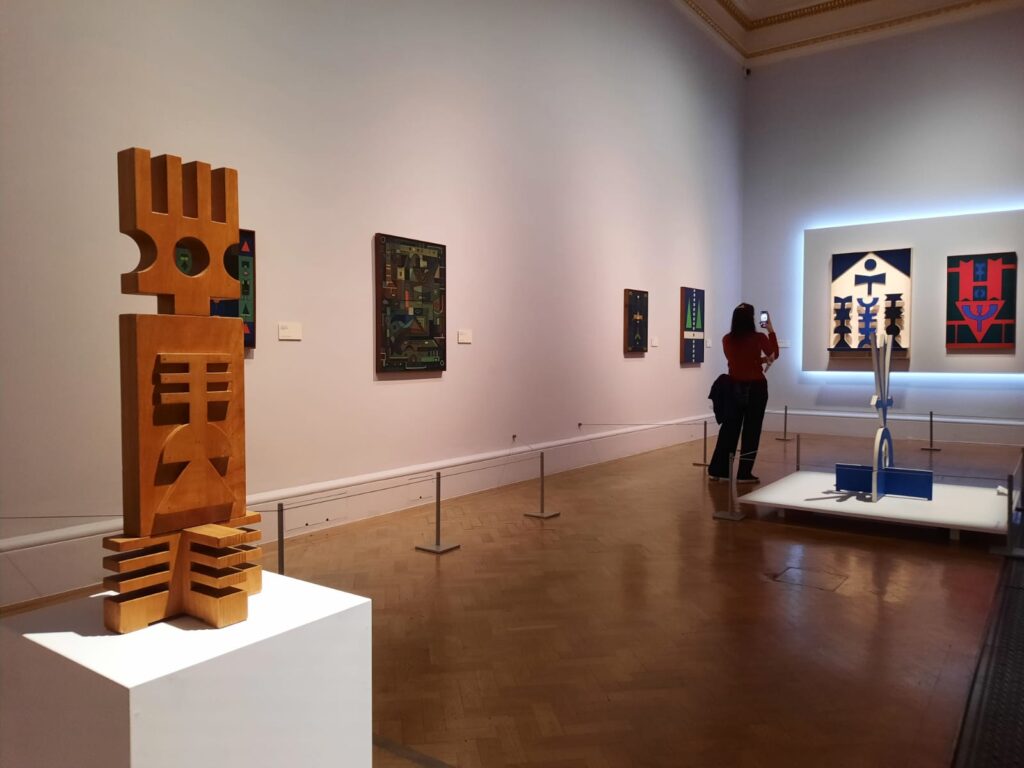
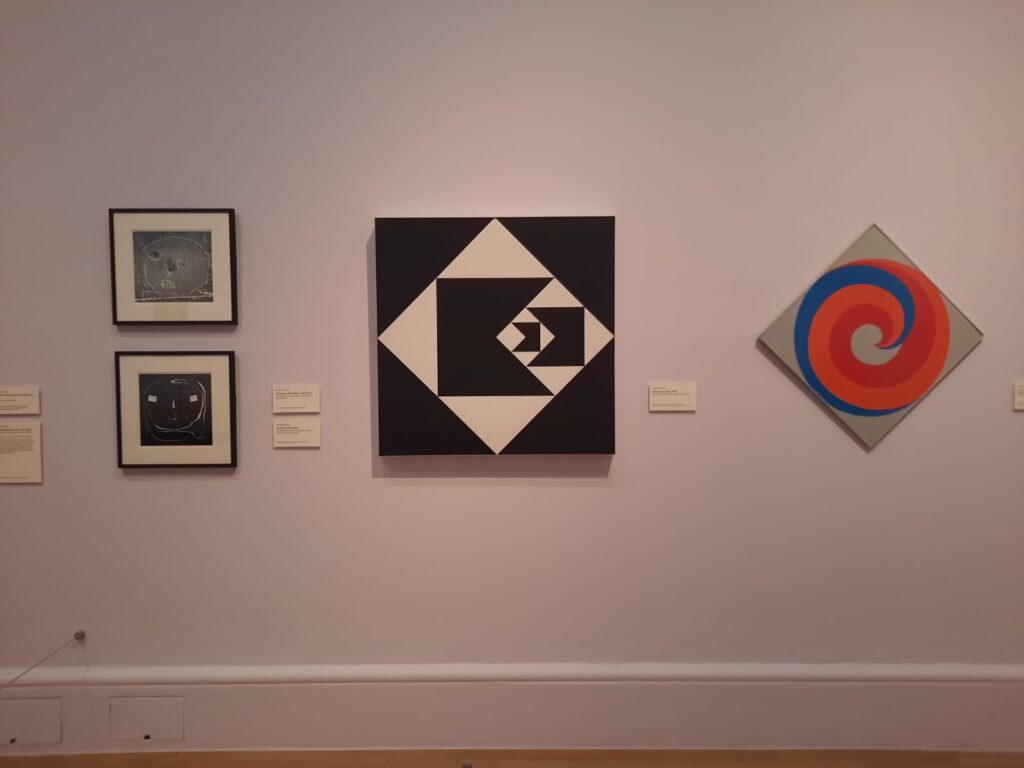
Appropriation vs. Interpretation
There are many topics within Brasil! Brasil! The Birth of Modernism that I think would make interesting exhibitions on their own. The Grupo dos Cinco, for instance. The female artists. Something looking at the art scene in Brazil rather than the artists. Modernism and Concretism as a distinctly Brazilian movement. A knottier subject might attempt to tackle appropriation vs. interpretation. It’s here in this exhibition as a theme, but is one I think could be fascinating to develop further.
What am I talking about, though? Well, I’ve spoken already about how many of the artists included here wanted to explore Brazilian identity in all its cultural and ethnic diversity. But how an artist approaches this, whether from the inside or outside, has a bearing on the end result. Let’s take two examples. Vicente do Rego Monteiro was one of the first Modernists to engage with Indigenous cultures in Brazil. If engage is the right word – he didn’t have any direct contact with them. But his works in this exhibition are full of Indigenous motifs, and compositions full of monumental Indigenous figures. It’s like the Parisian modernists and their interest in African masks: the incorporation of the imagery of other cultures but from the outside.
A different kind of incorporation of Brazil’s varied cultures comes in the last room of the exhibition. Rubem Valentim grew up between the religious traditions of Catholicism and Candomblé. Valentim isn’t the only artist here to incorporate aspects of Candomblé into their art, but his sculptures (the only ones in the exhibition) are very distinctive in their use of spiritual iconography. Valentim considered himself an artist-priest, and rejected Concretism’s focus on aesthetics alone. His work feels like the antithesis of Rego Monteiro’s outside-in perspective and is a great point on which to conclude the exhibition.
This is just one little sidetrack into endless possibilities for further exploration. And in some ways, sparking so many ideas is the hallmark of a good exhibition. Brasil! Brasil! The Birth of Modernism brings bright colours and unfamiliar scenes to the galleries of the Royal Academy. And despite the occasional restrictiveness of its artist-centred approach, it does give glimpses of a modernist movement set against the upheavals of 20th century Brazilian society.
Salterton Arts Review’s rating: 3.5/5
Brasil! Brasil! The Birth of Modernism on until 21 April 2025 only.
Trending
If you see this after your page is loaded completely, leafletJS files are missing.

